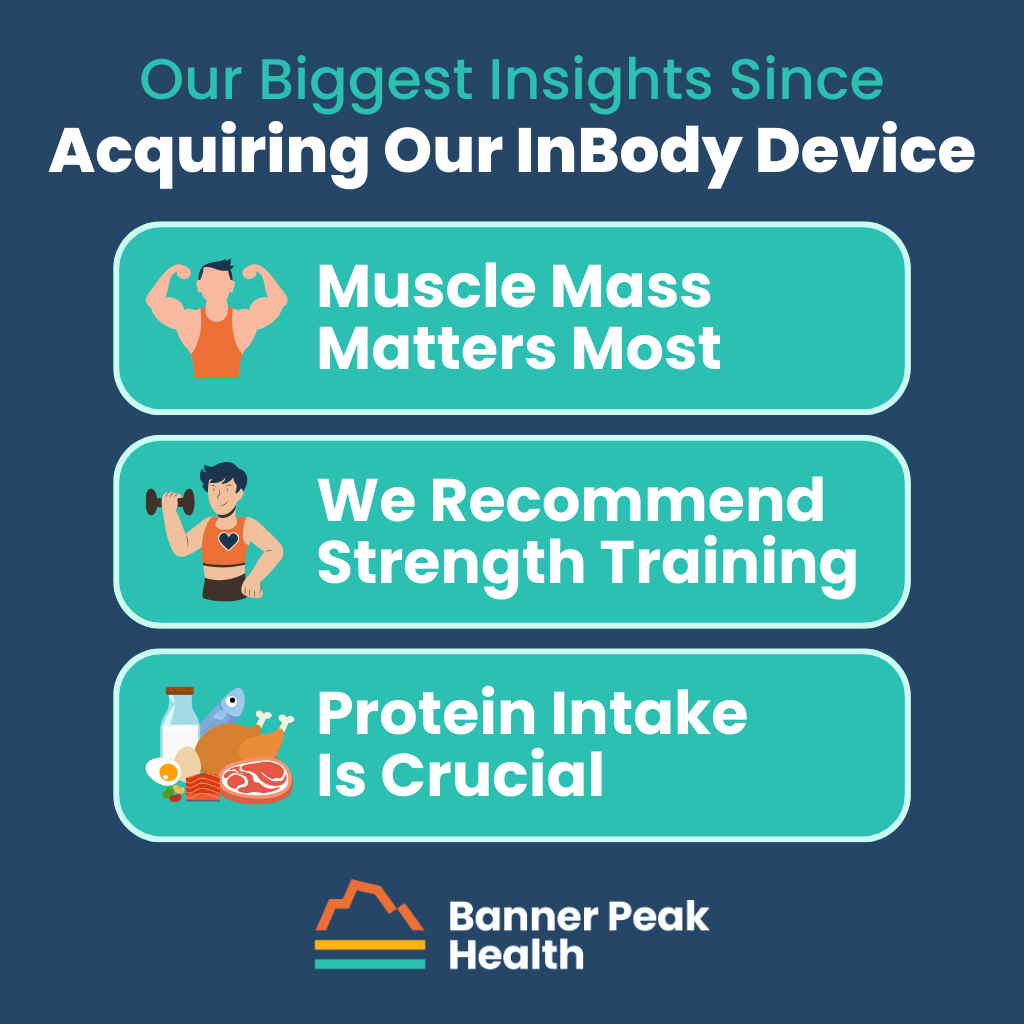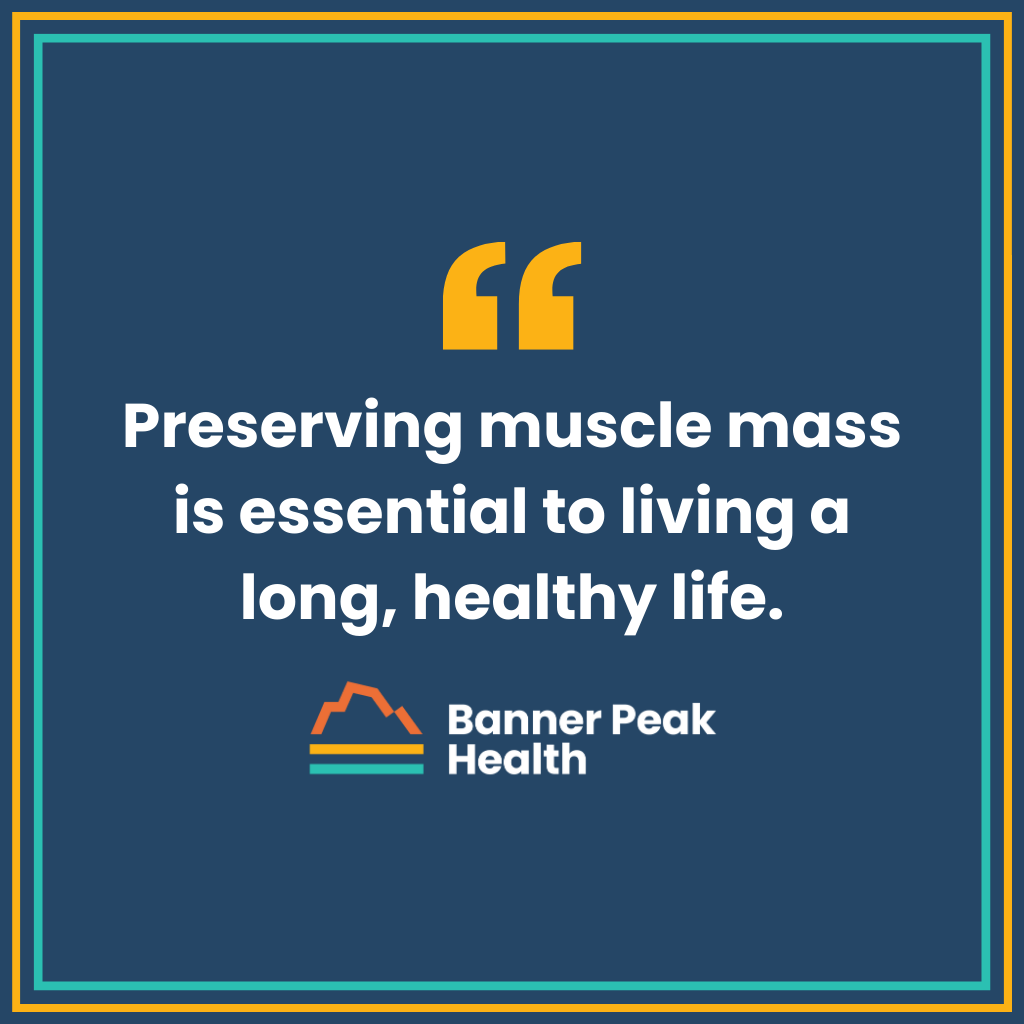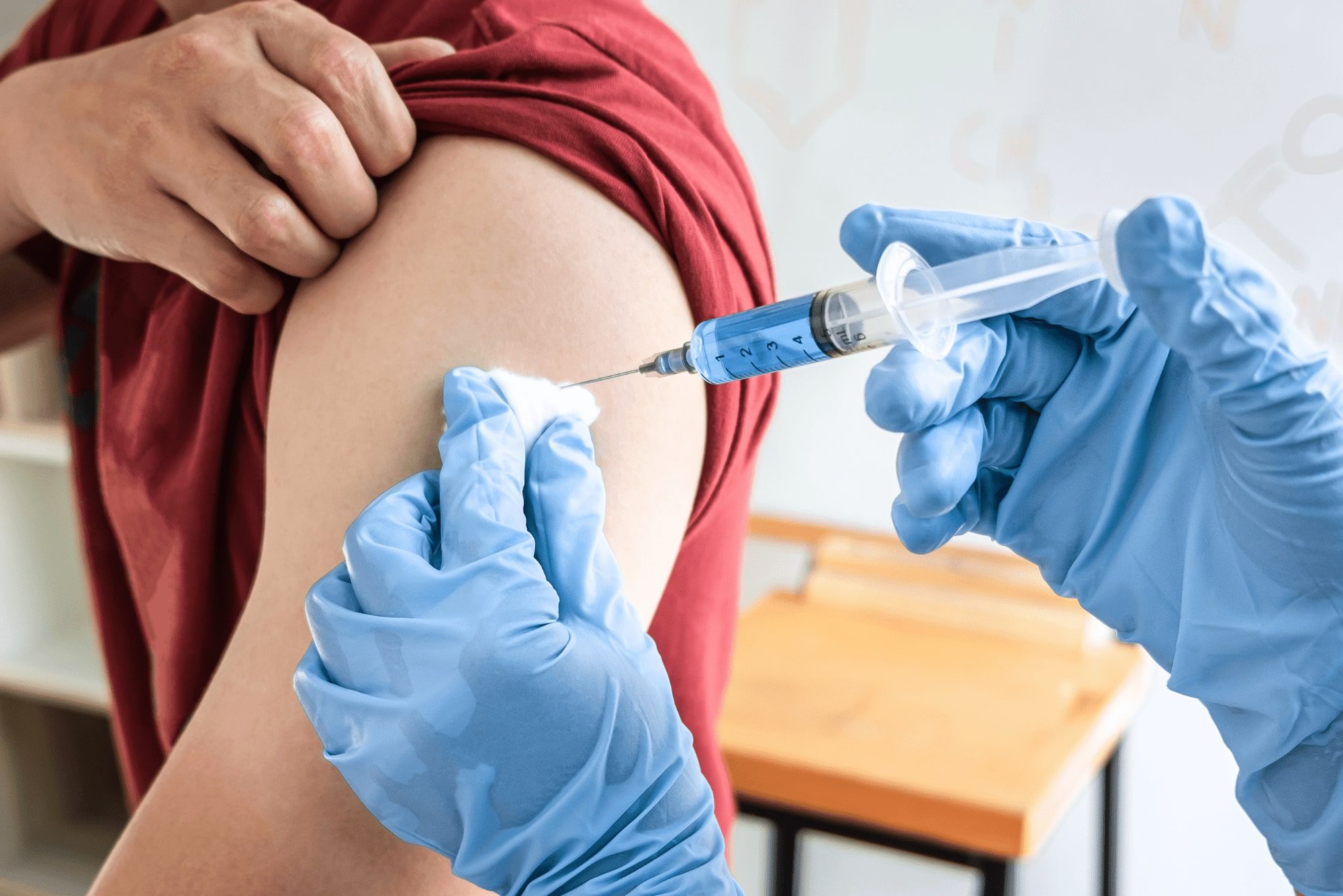An InBody machine provides body composition information, including fat weight, water weight, and dry lean mass (muscle, bone, and connective tissue). It allows for a more accurate description of a patient’s body composition than BMI.
This article will answer the question, “What is an InBody scan?” and explain what we’ve learned since acquiring our InBody device.
InBody at Banner Peak Health
We were excited to introduce our InBody device in January 2023.
What is an InBody scan? It’s a bioelectrical impedance analysis for determining what percent of a person is water weight, muscle weight, and fat weight.
A patient stands on the InBody device and holds an electrode in each hand. The device sends an imperceptible current across different axes generated from those four contact points.
The device calculates the resistance across each axis and diagnoses what percentage of the patient is water, fat, and muscle. It’s able to accomplish this due to a fundamental chemical difference between water and fat: water conducts electricity, while fat insulates.
Stepping on a scale doesn’t give us clinically vital information regarding the body’s composition. InBody does.
Our Biggest Insights
Anyone looking in a mirror or stepping on a scale can tell whether they’re overweight. When we started using our InBody scan, we weren’t surprised by the fat content results we saw. However, other results did surprise us.
Sometimes, patients who appeared healthy found out they weren’t as healthy as they thought. Their muscle mass was declining, and they were at risk for sarcopenia. (More on this later.)
Other patients who expected poor results because they were overweight had excellent muscle mass. Hidden in their bodies were real athletes!
We give credit where credit is due. InBody scans help us diagnose and treat every patient appropriately.

Muscle Mass Matters Most
You can’t tell someone’s muscle mass just by looking at them. That’s where InBody comes in handy.
Muscle mass predicts longevity and level of function in later adulthood (age 50+). If we identify and enhance muscle mass in middle age, we can improve the quality and duration of our lives.
It’s also imperative to diagnose and prevent sarcopenia — the decline in muscle mass associated with age. With InBody’s help, we can treat and correct sarcopenia more effectively.
Strength Training
When we discover a patient is at risk for sarcopenia, we recommend strength training and other regimens. For some, this means taking advantage of gym memberships or arranging sessions with a fitness instructor.
Some older patients may use wheelchairs but still need to practice strength training. We send Zoom links for exercises they can do while seated.
Protein Intake
Protein intake is also crucial for building muscle. The current recommended daily allowance (RDA) is 0.8g of protein per kilogram of body weight, according to the FDA. However, experts like Peter Attia recommend 2g per kilogram of body weight (2.5 times the RDA).
The RDA is the minimum amount necessary to stave off a disease state, while Peter Attia’s recommendation advocates maximizing your health state. I target somewhere between the two to enhance patients’ health.
Not all proteins are equal. For example:
- 1g of animal protein is not the same as 1g of vegetable protein.
- The ratio of amino acids in different proteins varies.
- Each type of protein has a different bioavailability.
If you’re not careful, you can exceed your recommended caloric intake. We’re exploring various supplement options as a means to avoid this.
We’re also looking into branched-chain amino acids, a potent form of amino acid supplementation that may preserve muscle mass. Because there is such a wide array of commercial products available, I’m uncomfortable making a pronouncement until I know more.
Tracking What Happens to Muscle Mass During Weight Loss
Successful weight loss involves expending more calories than you ingest. Ideally, we want fat to provide that excess energy, but we don’t always get what we want.
For most weight loss regimens, we expect to lose 75% of weight from fat and 25% from muscle mass. However, we’re finding through InBody scans that when patients use weight-loss medications like Ozempic and Mounjaro (which have GLP-receptor agonist activity), that ratio can be as high as 60% fat loss and 40% muscle loss.
For some patients, this is problematic or even dangerous. By monitoring muscle mass and recommending increased protein intake as well as strength training, we can mitigate the risk of these weight loss medications.

Today’s Takeaways
In addition to the traditional metrics of weight and blood pressure, we now also track muscle mass. InBody provides a more nuanced look into a vital health status.
At Banner Peak Health, we’re always excited to implement new technology that helps us gain insights into each patient’s health status.
So, what is an InBody scan? It’s one of the latest tools that allows us to provide state-of-the-art medical care. It has reinforced that preserving muscle mass is essential to living a long, healthy life.

Barry Rotman, MD
For over 30 years in medicine, Dr. Rotman has dedicated himself to excellence. With patients’ health as his top priority, he opened his own concierge medical practice in 2007 to practice medicine in a way that lets him truly serve their best interests.



